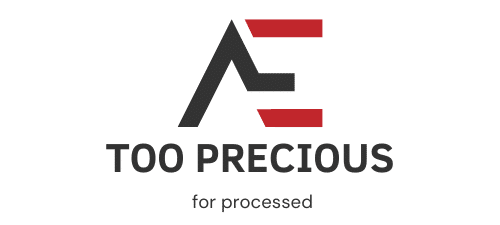What Are the Best Practices for Reducing Exposure to Household Toxins?

As you navigate through your daily life, you may not be aware of the countless chemicals present in your environment. From the food you eat to the water you drink, from the air you breathe to the products you use — chemicals are ubiquitous. Some of these chemicals, known as PFAS (Per- and polyfluoroalkyl substances), have been linked to adverse health effects. In response to growing concerns about chemical exposure, many people are seeking information to better understand these risks and how to reduce them. This article will delve into the best practices for reducing exposure to household toxins.
Understanding Environmental Exposure to Chemicals
Before we identify ways to reduce exposure, it is essential to understand the various routes through which we are exposed to chemicals. These can broadly be classified as air, water, food, and consumer products.
Avez-vous vu cela : Can Pet Therapy Alleviate Symptoms of PTSD in Veterans?
Air – Indoor air quality is a significant concern as people spend most of their time indoors, where the concentration of some pollutants can be 2 to 5 times higher than typical outdoor concentrations. The primary sources of indoor air pollution include combustion sources like oil, gas, kerosene, coal, wood, and tobacco products; building materials and furnishings; household cleaning and maintenance products; personal care products; and outdoor sources such as radon and pesticides.
Water – Chemicals can contaminate water through direct discharge of waste materials into water bodies, runoff from agricultural fields and urban areas, and leaching from waste disposal sites and storage tanks.
Sujet a lire : How Can Biophilic Design in Workspaces Influence Employee Wellness?
Food – Chemicals can enter the food chain through contaminated water, soil, and air. Additionally, chemicals are used in food production, processing, packaging, and preparation.
Consumer Products – Many consumer products, including cleaning supplies, personal care products, and even toys, contain chemicals that can be harmful to human health.
Tips to Improve Indoor Air Quality
Improving indoor air quality is a crucial step in reducing exposure to household chemicals. Several approaches can be used to enhance the quality of indoor air.
First off, reduce the use of products that can emit pollutants into the air. These include certain types of furniture, building materials, and cleaning products. Be conscious of the products you bring into your home and try to choose those with lower emission rates.
When using products that can emit pollutants, ensure adequate ventilation. This can be achieved by opening windows, using fans, and ensuring that air conditioning and heating systems are well-maintained and clean.
Lastly, use air cleaners to reduce the concentration of pollutants in the air. These devices can be particularly useful for people with allergies or asthma, as they can help remove allergens from the air.
Safe Water Practices
Ensuring the safety of the water you drink and use is another essential factor in reducing chemical exposure. Here are some suggestions:
First, get your water tested to know what contaminants it might contain. This will help you identify the best water treatment method for your home.
Second, use appropriate water treatment methods such as activated carbon filters, reverse osmosis systems, or distillers to remove chemical contaminants.
Lastly, avoid the use of plastic water bottles as they can leach chemicals into the water. Instead, opt for glass or stainless steel containers.
Healthy Food Choices
Your food choices can play a significant role in your exposure to chemicals. Here’s how to make more healthful selections:
Buy organic or locally grown foods when possible. These are less likely to contain chemical residues from pesticides and fertilizers.
Limit processed foods as they often contain a variety of chemicals used for preservation, flavoring, coloring, and texture.
Cook at home more often to have better control over the ingredients you use.
Choosing Safer Consumer Products
Finally, consumer products are a common source of chemical exposure. When selecting products for use in your home, be conscious of their potential to expose you and your family to harmful chemicals.
Choose cleaning products that are labeled "green" or "environmentally friendly". These products are less likely to contain harmful chemicals.
Opt for personal care products that are free of harmful chemicals such as parabens, phthalates, and synthetic fragrances.
Avoid plastic toys for children as they may contain phthalates and other harmful chemicals. Instead, choose toys made of natural materials like wood or fabric.
Remember, reducing exposure to household toxins is not about eliminating every single potential source of exposure. Instead, it’s about making informed choices and taking practical steps to minimize risk. By following the tips and practices outlined in this article, you can create a healthier living environment for you and your family.
Tips to Utilize Natural Cleaning Methods
One of the key sources of chemical exposure are the cleaning products we use in our homes regularly. Commonly used cleaning products contain a variety of potentially harmful chemicals, such as ammonia, chlorine bleach, and volatile organic compounds (VOCs). These substances can contribute to poor indoor air quality and cause health effects with prolonged exposure.
Natural cleaning methods can be a safer alternative. Natural ingredients like vinegar, baking soda, and lemon juice can be used in various ways as effective cleaning agents. For instance, a mixture of vinegar and water can clean and disinfect most surfaces, while baking soda can be used as a mild abrasive scrub for tougher grime and stains.
Microfiber cloths and mops are another excellent way to reduce chemical exposure. They can effectively capture dust, dirt, and grime without the need for chemical cleaning products.
Avoid air fresheners as they are a common source of VOCs. Instead, consider using essential oils or simmering spices on the stove to freshen the air in your home.
Choose unscented laundry and dishwashing detergents. Fragrances in these products often contain phthalates, which have been linked to a variety of health problems.
By adopting natural cleaning methods, you can significantly reduce your exposure to harmful chemicals, improve indoor air quality and protect your health.
Mitigating Exposure to Flame Retardants
Flame retardants are a group of chemicals used in a variety of household products, including furniture, electronics, and children’s toys, to slow or prevent the start of fire. While their fire safety benefits are clear, research shows that these chemicals can have adverse health effects.
Choose furniture without flame retardants. Many manufacturers now offer furniture that’s free of these chemicals. If replacing furniture isn’t an option, ensure you regularly clean your home to reduce dust that may contain flame retardants.
Be mindful of electronics. Flame retardants are commonly found in electronics. So, keep older electronics in good repair to reduce the release of toxic dust.
Opt for natural fabrics. Flame retardants are often used in synthetic fabrics. Choosing clothing, bedding, and other textiles made from natural fibers can help reduce exposure.
Beware of foam items. Polyurethane foam items, such as mattresses and pillows, often contain flame retardants. Consider alternatives that are free from these chemicals.
Taking these steps to mitigate exposure to flame retardants can significantly contribute to reducing household toxin exposure and enhancing your overall environmental health.
Conclusion
Reducing exposure to harmful chemicals in the home is a crucial aspect of safeguarding public health. By understanding the sources of exposure and implementing the strategies outlined in this article, we can create healthier living environments. This involves improving indoor air quality, ensuring safe drinking water, making healthier food choices, using safer consumer products, adopting natural cleaning methods, and mitigating exposure to flame retardants.
Remember, it’s about making conscious, informed choices to protect ourselves and our families. While it may not be possible to completely eliminate exposure to all toxic substances, these steps will significantly reduce risk and contribute to a healthier, safer home environment. This should be a part of our regular lifestyle choices, not just an occasional effort. By taking responsibility for our own homes, we take a significant step towards a healthier society as a whole.
